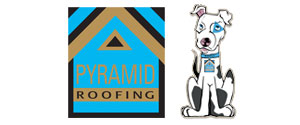- Do you subscribe to Dharma Dog Training’s Newsletter? You should.
- A Unique Campaign from The Humane Society of the United States
- Rabid bats in Omaha- Stay safe, prepared with these tips
- Springtime Activities in Omaha
- Mill Dog Monthly from Bailing Out Benji
- World Spay Day, Legislative Alert in Nebraska
- Attend the Nebraska Rescue Council’s monthly meeting this Saturday
- Five Hard-to-Ignore Reasons to Adopt!
- Paws in Pink to Benefit Breast Cancer Foundation
- VCA, Inc. Acquires MidWest Vet Specialists from Kansas State University
Guide Dog Etiquette – how to interact with a Guide Dog Team

We’ve brought you some informational articles about service dogs in the past and recently put readers in the shoes of Kay Konz, a Lincoln woman who because of a visual impairment, relies on her guide dog, Jonquil, for help each day.
Kay’s vision started to deteriorate to the point where she would benefit from having a guide dog just a few years ago. One observation she let us in on is the disregard that many have towards etiquette and proper behavior when they encounter a guide dog. Her pups, Hans and Jonquil, have been pretty ones, so they naturally attract attention, but most don’t understand that her dogs are doing essential tasks and need to be allowed to do them without distraction. Kay has provided us with some tips on guide dog etiquette so that you, as a dog lover, can interact with service dogs while still allowing them to do their duty. Here are some words of advice for anyone who encounters a service or guide dog that will help everyone involved do what’s best for the guide dog and its handler.
Guide Dogs are trained to be mobility partners for people who are blind or visually impaired. A Guide Dog team consists of a blind or visually impaired “handler” and a “guide.” The handler has gone through an extensive training program to learn how to work and care for the Guide Dog. The guide is a specially trained dog, bred from stock that has been carefully selected for its even temperament, intelligence and good health. The dogs are taught good social behavior from the time they are puppies. They respond to obedience commands in addition to guidework, and they are trained to lie quietly when not guiding.
In order for the dog to maintain focus on its guidework and to ensure the safety of the team as they travel, the dog and handler must form a very close bond and learn to communicate with each other. The handler will need to act in ways that will reinforce this bond and maintain the training the dog has received. Therefore, it is important for you to respect the handler’s needs and not do anything that would lessen the bonding process between the dog and its handler.
Interacting With a Guide Dog Team
Although it is very tempting to approach and pet a Guide Dog, it is important that you greet the handler first and ask permission to meet his or her dog. Never distract a guide while it is working, because you may endanger the safety of the team or erode the dog’s training. The dog should be on leash, under control, and not feel cornered when meeting people for the first time. Individuals should approach one at a time, speak softly to the dog and offer the back of their hand for the dog to sniff.
An important goal in training is to foster independence in attitude as well as through mobility. Feel free to offer your help, but do not force your assistance on the handler if it is not welcome.
Occasionally, the handler may need directions to a destination or an explanation of an unusual situation. Never grab the person’s arm or the dog’s harness handle to direct the team. You can help by answering questions accurately and specifically using words such as “to your left” or “straight ahead,” rather than “over there” or “that way.” A Guide Dog handler will know how to cope with most situations if given accurate information about the circumstances.
In certain situations, the handler may determine that using a cane or sighted guide for travel would be a better option than working the Guide Dog. This decision is often made to avoid stressful situations for both the dog and the handler. While walking with a sighted guide, the handler will hold the dog’s leash and have the dog walk alongside.
Introducing Pets
When a Guide Dog is introduced to another dog for the first time, both dogs should be on leash, under control, and not allowed to play roughly or too freely. It is always important for the handler to maintain verbal control of the Guide Dog. If your pet dog distracts a Guide Dog, inform the handler that you and your dog are present, stand still with your dog under control, and allow the handler to practice control exercises with his or her guide.
When introducing a pet cat to the Guide Dog, make it a positive experience for everyone by letting the cat safely explore the new dog while the guide is in a crate or on leash.
Your Cooperation is Essential
Guide dogs are the guiding eyes for people who are blind or visually impaired, and they are specially bred and trained for this most important job. There are several guidelines people must follow when in the presence of a guide dog to allow for the safety of the dog and its handler. Disregarding these guidelines can distract the dog, which can create a dangerous situation for the dog and its handler.
Here’s a list of common etiquette techniques everyone should be aware of. If a co-worker gets a new guide dog, if your child’s school gets a service dog, or if any other circumstance brings a guide dog to you and your surroundings, post this list so everyone understands the implications of treating a guide dog like “just another pup.”
1. Don’t touch, talk, feed or otherwise distract the dog while he is wearing his harness. Do allow the dog to concentrate and perform for the safety of his master.
2. Don’t treat the dog as a pet. Do give him the respect of a working dog.
3. Don’t give the dog commands. Do allow the master to do so.
4. Don’t try to take control in situations unfamiliar to the dog or master. Do assist the master upon his request.
5. Don’t walk on the dog’s left side as he may become distracted or confused. Do walk on the owner’s right side but several paces behind him.
6. Don’t attempt to grab or steer the person while the dog is guiding him or attempt to hold the dog’s harness. Do ask if the owner needs your assistance and, if so, offer your left arm.
7. Don’t be over-protective or overbearing when the graduate first arrives home with the new dog. Do be thoughtful, patient, and try to inspire confidence in the master. In time, you will admire the expertise of the team.
8. Don’t expect too much too soon. Do remember that the dog is young and that complete harmony and confidence take patience, perseverance and time.
9. Don’t give the dog table scraps. Do respect the master’s need to give the dog a balanced diet and to maintain its good habits.
10. Don’t allow children to tease or abuse the dog. Do allow it to rest undisturbed.
11. Don’t allow your pets to challenge or intimidate a guide dog. Do allow them to meet on neutral ground when all parties can be carefully supervised.
12. Don’t allow the dog on your furniture or in areas of the home mutually agreed upon by the family and master. Do ask the master to correct any errant behavior or trespassing.
13. Don’t let the dog out of the house unsupervised. Do understand its value to the master.
14. Don’t pat the dog on the head. Do stroke the dog on the shoulder area but only with its owner’s approval.
Hopefully, if in the future you are presented with the opportunity to meet a guide dog, you are better equipped to do so. Guide dogs, again, have a very specific job to do, and when we don’t allow them to do its job, bad things can happen. Be considerate. Be kind. Do the right thing. Kay and others will be very thankful if you heed the above advice.
Related Posts
Latest News
-
Join Us at Pick A Pooch 2025: A Fun-Filled Weekend for the Whole Family
A Fun-Filled Weekend for Pet Lovers and Families Alike Mark...
- Posted 1 year ago
- 0
-
Beardmore Presenting Sponsor At This Years Pick-A-Pooch event
🐾 We are thrilled to announce that Beardmore Subaru is...
- Posted 3 weeks ago
- 0
-
How Having A Pet Can Change Your Life
Having a pet can open your heart in ways that...
- Posted 2 months ago
- 0
-
How To Improve The Life Of Your Senior Pet
Do you have an elderly fur baby and want to...
- Posted 3 months ago
- 0
-
Springtime Activities To Enjoy With Your Furry Friends
Are you preparing for warmer weather and want some ideas...
- Posted 4 months ago
- 0
-
Pros And Cons Of Microchipping Your Pets
Have you considered whether your pets should be microchipped and...
- Posted 4 months ago
- 0
-
The Best New Fun Toys For Dogs And Cats
The Best New Fun Toys For Dogs And Cats Did...
- Posted 5 months ago
- 0
-
Heartfelt Ways To Show Your Pet You Love Them
Did you know there are more ways to show your...
- Posted 6 months ago
- 0
























You must be logged in to post a comment Login